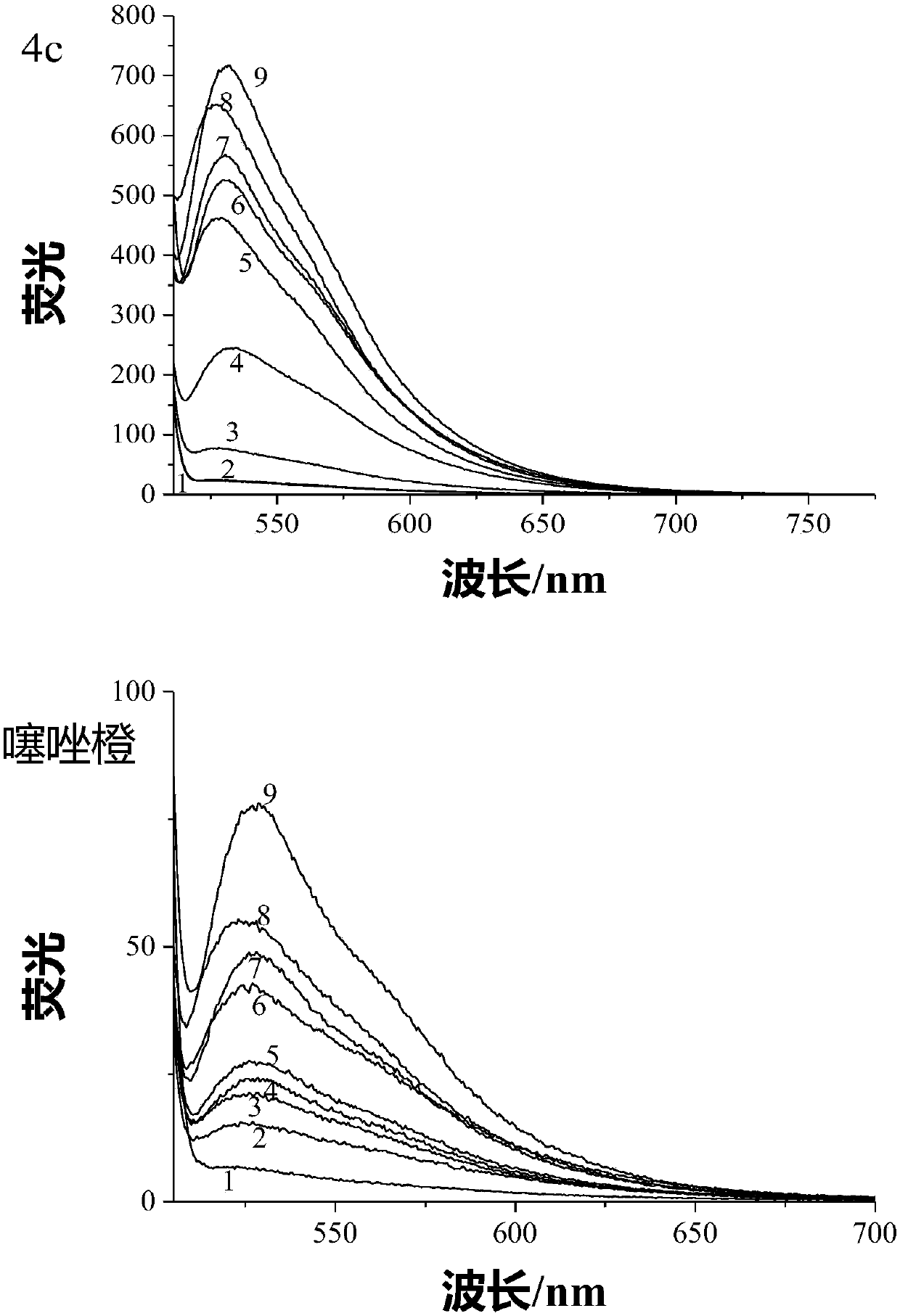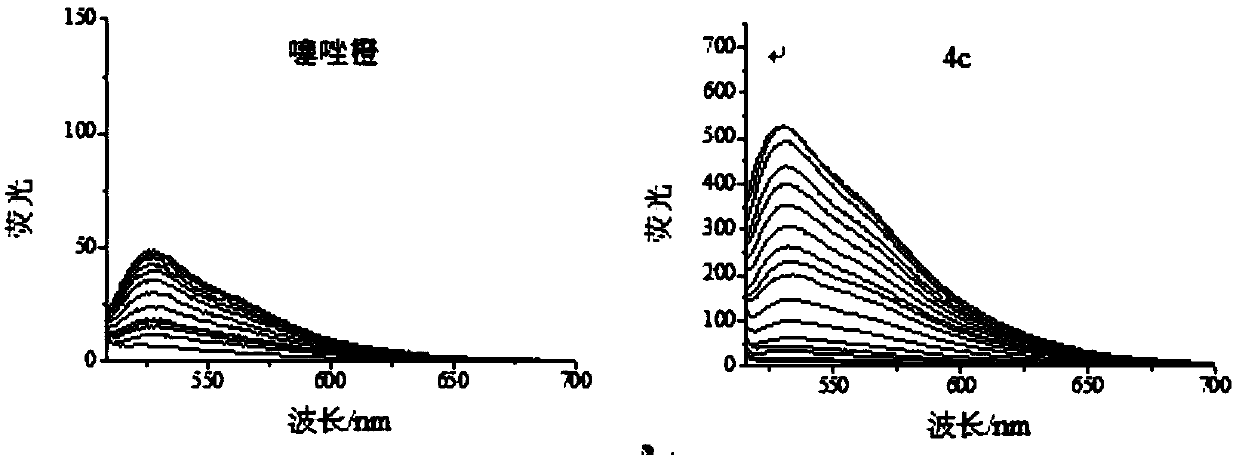Compound and preparation method, fluorescent dye and fluorescent probe thereof
A technology of fluorescent dyes and fluorescent probes, applied in the field of nucleic acid detection, to achieve good fluorescence response, enhanced fluorescence intensity, water solubility and improved cell permeability
- Summary
- Abstract
- Description
- Claims
- Application Information
AI Technical Summary
Problems solved by technology
Method used
Image
Examples
preparation example Construction
[0066] The invention provides a preparation method of a compound, comprising:
[0067] The compound shown in formula (III) is reacted with the group shown in formula (II) to obtain the compound shown in formula (I);
[0068]
[0069] Among them, R 1 with R 2 Each is independently selected from H or an aromatic amine group, and at least one is an aromatic amine group;
[0070] R 3 selected from H, F, Cl, Br, OH, OCH 3 , N(CH 3 ) 2 Or C1~C6 alkyl;
[0071] R 4 Alkyl group selected from C1~C6;
[0072] R 7 with R 8 each independently selected from H or CH 3 , and not H at the same time, and cannot be CH at the same time 3 .
[0073] where the R 1 ~R 8 All are the same as above, and will not be repeated here.
[0074] According to the present invention, the compound represented by the formula (III) is prepared according to the following method:
[0075] The compound shown in formula (IV) is reacted with alkyl iodide to obtain the compound shown in formula (III)...
Embodiment 1
[0105] Embodiment 1: the synthesis of compound 1a
[0106] Weigh 0.2g (1.130mmol) of 4-chlorodimethylquinoline into a 25ml round-bottomed flask, add about 1.2g of methyl iodide and 5.0ml of sulfolane, and heat the mixture to 60°C for 6 hours of reaction Afterwards, cool, shake after adding ethyl acetate, suction filter, wash the solid with ethyl acetate, weigh after vacuum drying, thin-layer chromatography preliminary shows that there is no by-product, obtains 1.82g pure product 1a, chemical structural formula is as follows, yield was 88.6%.
[0107]
[0108] Compound 1a obtained in Example 1 was analyzed by nuclear magnetic resonance, and its hydrogen nuclear magnetic resonance spectrum result was obtained: 1H NMR (400MHz, DMSO) δ8.67 (d, J=9.0Hz, 1H), 8.58–8.50 (m, 2H), 8.33 (ddd, J = 8.7, 7.1, 1.3Hz, 1H), 8.11 (dd, J = 13.4, 5.7Hz, 1H), 4.43 (s, 3H), 3.07 (s, 3H).
[0109] Compound 1a obtained in Example 1 is analyzed by mass spectrometer, and its mass spectrometry res...
Embodiment 2
[0110] Embodiment 2: the synthesis of compound 1b
[0111] The preparation method of this example is the same as that of Example 1 except that 4-chloroquinoline is used instead of 4-chlorodimethylquinoline. It is a reddish-brown solid with the following chemical structure and a yield of 90.5%.
[0112]
[0113] Compound 1b obtained in Example 2 is analyzed by nuclear magnetic resonance, and its hydrogen nuclear magnetic resonance spectrum result is obtained: 1H NMR (400MHz, DMSO) δ9.12 (d, J=6.1Hz, 1H), 8.87 (d, J= 6.1Hz, 1H), 8.50(dd, J=13.4, 7.6Hz, 2H), 8.37–8.28(m, 1H), 8.13(t, J=7.7Hz, 1H), 4.55(s, 3H).
[0114] The compound 1b obtained in Example 2 is analyzed by a mass spectrometer, and its mass spectrometry result is obtained: ESI-MS m / z: 178.04[M+H] + .
PUM
 Login to View More
Login to View More Abstract
Description
Claims
Application Information
 Login to View More
Login to View More - R&D
- Intellectual Property
- Life Sciences
- Materials
- Tech Scout
- Unparalleled Data Quality
- Higher Quality Content
- 60% Fewer Hallucinations
Browse by: Latest US Patents, China's latest patents, Technical Efficacy Thesaurus, Application Domain, Technology Topic, Popular Technical Reports.
© 2025 PatSnap. All rights reserved.Legal|Privacy policy|Modern Slavery Act Transparency Statement|Sitemap|About US| Contact US: help@patsnap.com



